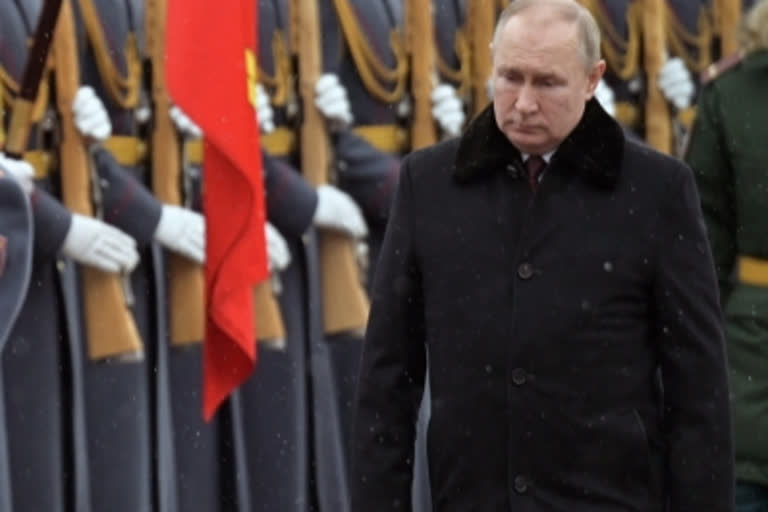New Delhi: The cornerstone of Russian military strategy is largely two-fold: Keep the endgame in sight, adopt a blow-hot-blow-cold stance so as to confuse the enemy, and keep the adversary guessing till the last minute. The endgame is clear—either Russia occupies Ukraine and annexes the Russian-dominant Donbas region, or installs a government at Kiev that is pliant to Moscow.
And that is why the Thursday morning ‘shock and awe attack' on Ukraine bears the stamp of a classical Russian military tactic at work. Till the onset of the sudden lightning attack on Ukrainian targets—largely in capital Kiev, Kharkiv, and Odessa—that began at 5 am, the debate was still raging among the Western powers as to whether Russia would at all launch an attack.
While the US was certain about the attack, many Western powers were convinced Russia was just posturing and pursuing a policy of brinkmanship and would not begin an all-out war despite the massive deployment of its military that encircled Ukraine on three sides—from the north, east and the south.
The questions were answered soon as missiles rained, tanks rolled out and aircraft blasted Ukrainian targets even as Russian ground forces moved in. According to reports, casualty figures from both sides had started coming in amid large-scale destruction.
The Russian tactic in Ukraine has been a classic Russian copybook military tactic, the standing examples of which can be seen in the Korean War and the Berlin crisis.
During the Berlin crisis of 1948-49, Soviet Premier Joseph Stalin kept the western powers guessing on what exactly was the Soviet stand on Berlin just after the Second World War was won—whether Berlin was to be a unified German capital or to be divided into spheres of influence among the victors?
And then, all of a sudden in 1949, Stalin ordered the barricading of Berlin so as to blockade it from the Western powers. Although Russia lost out due to its weaknesses and the combined strength of the capitalist alliance, the Berlin crisis served as one of the most significant events that kick-started the Cold War.
The continued access of the western allies to Berlin in 1948-49 by taking recourse to the famous ‘Berlin airlift’ effort continued to mortify the Soviets and later resulted in West Germany turning to NATO.
In the Korean War of 1950, Stalin’s Russia kept everyone guessing as to from which part the war would start. Military movements by North Korea—adequately armed with tanks, artillery, and aircraft by the Soviets—did not seriously raise suspicions of the South Korean establishment, the US intelligence, or even the UN observers, till the actual invasion happened.
Like Ukraine now, Russian adversaries were kept guessing in Berlin and Korea in the past.



